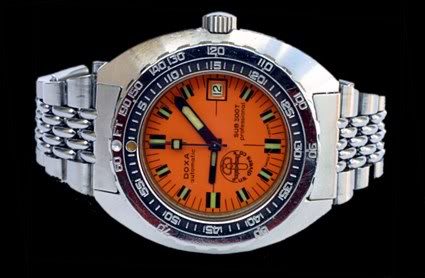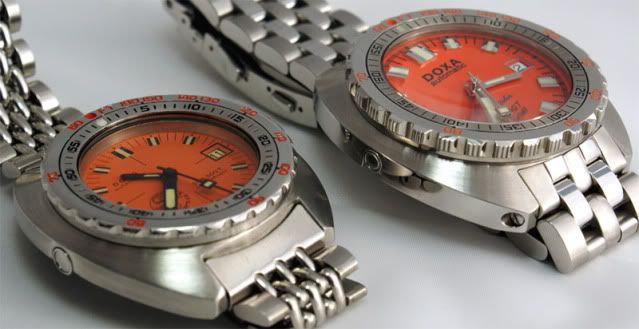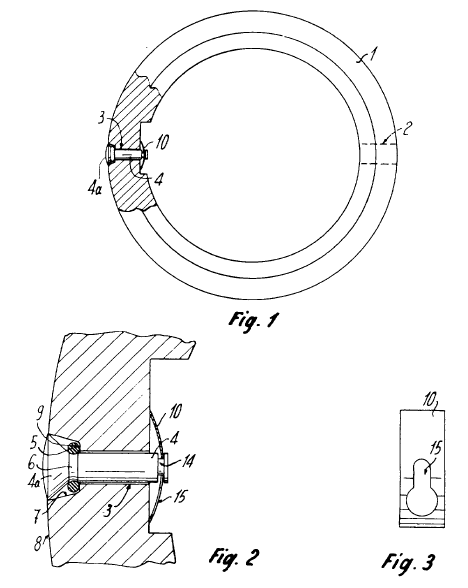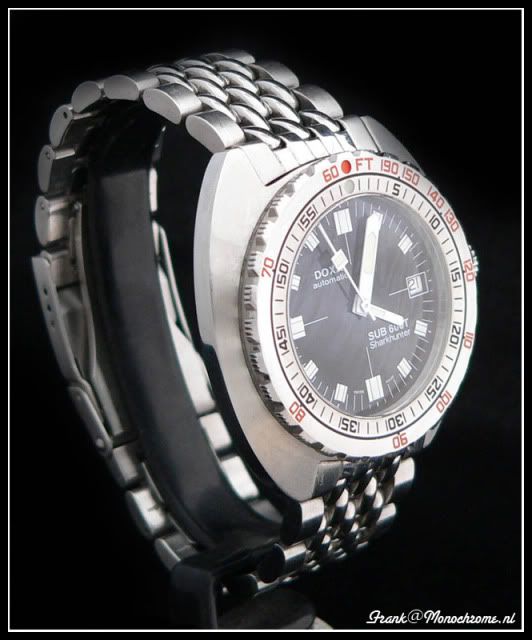Doxa Sub – first dive watch with Helium Escape Valve

The Doxa Sub dive watch is famous for its orange dial and rotating bezel to compute no-decompression times. Not many people know that Doxa was the first to have a publicly available dive watch with a Helium Release Valve.
In the 1950s and 1960s, the Rolex Submariner and Blancpain Fifty Fathoms showed there was a market for dive watches. It took Doxa until 1967 before they decided to add a dive watch to their collection. But when they did this, they did it right. For the development and testing, they teamed up with U.S. Divers. At that time Jacques Cousteau was chairman of U.S.Divers and his experience and that of other divers, was of essential value for the development of the Doxa Sub 300T, Doxa’s first dive watch. The Doxa Sub 300T was the first dive watch with an orange dial and a rotating bezel with decompression times.

The orange dial and contrasting black hands make reading time underwater easier. The orange dial is almost a trademark of the Doxa dive watches and is one of the typical features designed in collaboration with U.S. Divers. The rotating bezel with the official US Navy air dive table for no-decompression dives engraved onto its surface, is also one of these typical features. The watch could be used to calculate decompression times so divers know how long they have to wait until they can make their next dive. U.S. Divers bought the Doxa Sub 300T in large quantities and resold the watch in the United States. It was an instant hit with divers and quickly sold out upon its introduction.

Doxa was not only the first with an orange dial dive watch and a rotating bezel with decompression times, but Doxa was also the first to bring a dive watch with a helium escape valve on the consumer market. Especially the Rolex Sea-Dweller is well known for the helium escape valve and is often seen as the first dive watch with this feature. It was however Doxa who released the 300T Conquistador with helium escape valve in 1969. Rolex also made a dive watch with a helium escape valve but this was only sold to commercial dive companies like COMEX. It took Rolex until 1971 (some say 1972) before they released a Sea-Dweller with a helium escape valve for the consumer market.
Helium Escape Valve

When diving at great depths, divers often spend hours or even days in diving bells. In a diving bell, the pressure is much higher than at the surface and divers breathe a gas mix that contains the gas helium. Since helium molecules are the second smallest found in nature, this gas is able to work its way inside the watch.
This is no problem as long as long as the diver stays under pressure. But when the diving bell resurfaces, the pressure in the diving bell decreases and this causes the helium inside the case to expand. The built up pressure difference makes the helium want to escape from the watch. This could cause damage to the watch, like making the crystal pop off.
Most watch companies at the time simply created an even more robust case/crystal construction. Rolex and Doxa however thought of a different concept when they co-created the helium escape valve in the 1960s. A small, one-way valve integrated into the watch case allows pressure built up inside the watch to escape.
Doxa made history by releasing the first commercially available dive watch with a Helium Release Valve in 1969. Last year Doxa released the Sub 5000T, and finally a new Doxa with a Helium Release Valve.
Doxa re-issues
Soon after the introduction of the Sub 300 T the Swiss watch industry went into a crisis because of the availability of cheap quartz movements from Japan. Doxa joined a group of Swiss watchmakers to consolidate resources, but eventually failed and Doxa ceased operations in 1980. Since August 2002, Doxa has revived again and has introduced re-editions of its well-known watches in limited quantities. The first re-edition was the Sub 30o T, soon to be followed by the Sub 600T and other re-editions. Doxa watches are sold via the Doxa website and at the time I’m writing this they offer limited numbers of the Doxa Sub 1000T and Sub 5000T for a special reduced price!
Just for fun a photo of the Doxa 600T Sharkhunter, a watch I regret having traded… hope to find a nice one again sometime.

Reference
Please check Dr. Peter McClean Millar’s website dedicated to Doxa dive watches.
Watchuseek has a dedicated Doxa forum and lots of Doxaholics share their passion for this remarkable watch brand.




6 responses
Very nice article, Frank!
Hope you are enjoying your summer.
Kyle
Thanx Kyle 🙂
I’ve enjoyed the beautiful weather… over here we should do that while it lasts.
Very beautiful, I think I just found the perfec gift for my husband.
Added to my favourites list and added to my blogroll.
Very nice article. I have, however, one correction for you. You wrote: “Since helium molecules are the second smallest found in nature, this gas is able to work its way inside the watch.” Helium is an atom. It exists in nature as the single atom He. Although Hydrogen is the only atom smaller than He, it is not found in nature in the monatomic form. Hydrogen is a diatomic molecule H2. As it turns out, although H is smaller than He, H2 is larger than He. Helium is used in many industries as a leak detecting gas because it is the smallest atomic object found in nature.